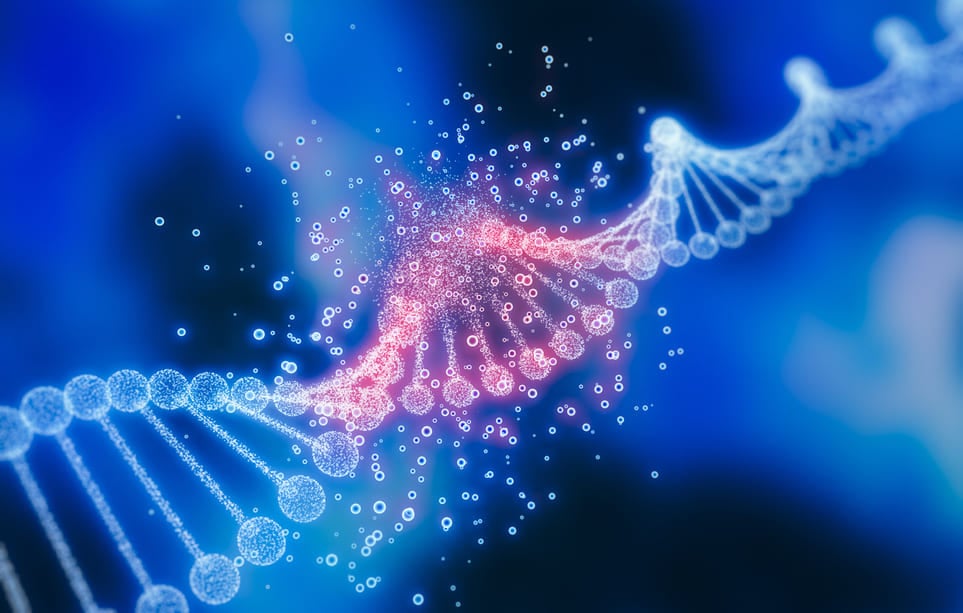Poly-L-lysine is a synthetic amino acid polymer – a chain of multiple L-lysine amino acid monomers, with multiple industry and biomedical applications.
As a monomer, lysine contains two amino groups, called α-polylysine and ε-polylysine, based on which carbon they are on. Α-polylysine is composed of either L-lysine or D-lysine enantiomers, based on the chirality (“handedness”) of the lysine’s central carbon. Poly-L-lysine is a polypeptide formed from L-lysine monomers. Poly-D-lysine, a similar molecule used in similar applications, is a polymer formed with D-lysine units.
These features give poly-L-lysine properties that are increasingly important for medical applications and biosynthesis. So why is poly-L-lysine useful, and how can it be used?
Why use poly-L-lysine coating?
Poly-l-lysine has a number of properties that make it useful for a wide range of applications. It can have a variety of different structures, including branched, linear and ‘star’ forms, which increases its range of uses. Its key properties include:
- High positive charge density: Poly-L-lysine has positively charged amino groups under specific pH conditions. It can form soluble complexes with negatively charged macromolecules and so can be used for coating many surfaces. Can also enter cells thanks to positive charge.
- Enhances electrostatic interaction: between a cell membrane’s negatively charged ions and a culture plate’s positively charged ions, which increases the number of positively charged sites available for cells to bind to.
- Forms polyelectrolyte complexes with DNA: which makes it useful as a gene carrier for transfection.
What does poly-l-lysine do?
Poly-l-lysine has many uses, including as transfection reagents, adjuvants in gene therapy, for drug-delivery, environmental clean-up, anchoring cells to culture plates, and coating superparamagnetic nanoparticles. So, what applications does poly-l-lysine have?
Transfection reagent and DNA binding
Poly-L-lysine is useful for many applications, including in therapeutic biology for DNA complexation and transfection. Transfection enables nucleic acids, proteins and nanoparticles to be inserted into cells, which allows gene expression to be modified. Transfection can be achieved by various methods, including chemical transfection, which requires a reagent with the ability to carry exogenic molecules into a cell.
As a transfection reagent, poly-L-lysine can be used for therapeutics, protein expression, cell labeling and MRI imaging. Magnetic particles functionalized with poly-L-lysine can bind to DNA in a weak alkaline environment, making it possible to treat genes in vivo. As a magnetic bead coating, poly-L-lysine also improves transfection efficiency by reducing the number of beads required. This protects unbound DNA from degradation when it enters a cell, and also improves the escape of DNA from lysosomes, allowing more DNA to reach the nucleus.
Poly-L-lysine’s ε-amino groups electrostatically interact with negatively charged phosphate groups of DNA. As such, a poly-L-lysine coating also enhances the binding force between magnetic particles and DNA.
Biodetection
Poly-L-lysine functionalized magnetic beads can be used with or without a PCR assay to detect pathogens. This relies on the strong positive charge of poly-L-lysine’s amino groups, which can join to the carboxyl of magnetic beads. In addition, poly-L-lysine can combine with bacteria via electrostatic adsorption.
Poly-L-lysine coated beads can also be used for quick, efficient, cost-effective, and simple foodborne pathogen detection. Research found that poly-L-lysine functionalized beads lowers the detection limit compared to a conventional PCR assay for both Staphylococcus aureus and gram-negative Escherichia coli O157:H7.
Anchoring cells to culture plates and solid surfaces
For many cell culture experiments, cells need to be anchored to culture plates in a way that can withstand temperature changes and washing steps. As a substrate, poly-L-lysine enables attachment of cells and proteins to culture plates, including ELISA plates.
Poly-L-lysine enhances electrostatic interaction between the cell membrane’s negatively charged ions and the positively charged ions of attachment factors on the culture plate surface. Used as a substrate, poly-L-lysine makes more positively charged sites available for binding cells on the culture’s surface.
Improving the affinity of quantum dots
Quantum dots are nanocrystals made of a semi-conducting material, which emit a specific wavelength of light when energy is applied to them. They are particularly useful for bioimaging and drug delivery. They cannot enter cells easily, and are quickly broken down by cellular biomolecules when they do. This means that, alone, quantum dots aren’t effective for labeling cells.
Modifying quantum dots with poly-L-lysine, allows them to be used in therapeutics for drug delivery. This is because quantum dots modified with poly-L-lysine have better affinity to cells and can enter them more easily. Modified quantum dots are also not cytotoxic, unlike unmodified dots. The poly-L-lysine coating also facilitates surface modification of the quantum dots, which expands their range of potential uses in therapeutics.
Poly-L-lysine-functionalized magnetic beads
Superparamagnetic beads enable the quick, simple, and effective isolation of a range of biomolecules. Magnetic beads can be functionalized with poly-L-lysine using several methods, including electrostatic and direct interactions, and cross-linking. Their applications include labeling stem cells, enhancing MRI imaging, cell and biomolecule isolation.
The use of magnetic particles also enables rapid separation of target molecules using a magnetic separation device. Poly-L-lysine functionalized magnetic beads can be used, for example, for convenient and effective nucleic acid isolation without centrifugation. Find out more about how magnetic separation could make your protocols quicker and simpler in our eBook guide to biomagnetic separation.
Related news
- Limitations and perspectives of Chemiluminescent immunoassay (CLIA)
- Spin Column
- CLIA-label protein conjugation





